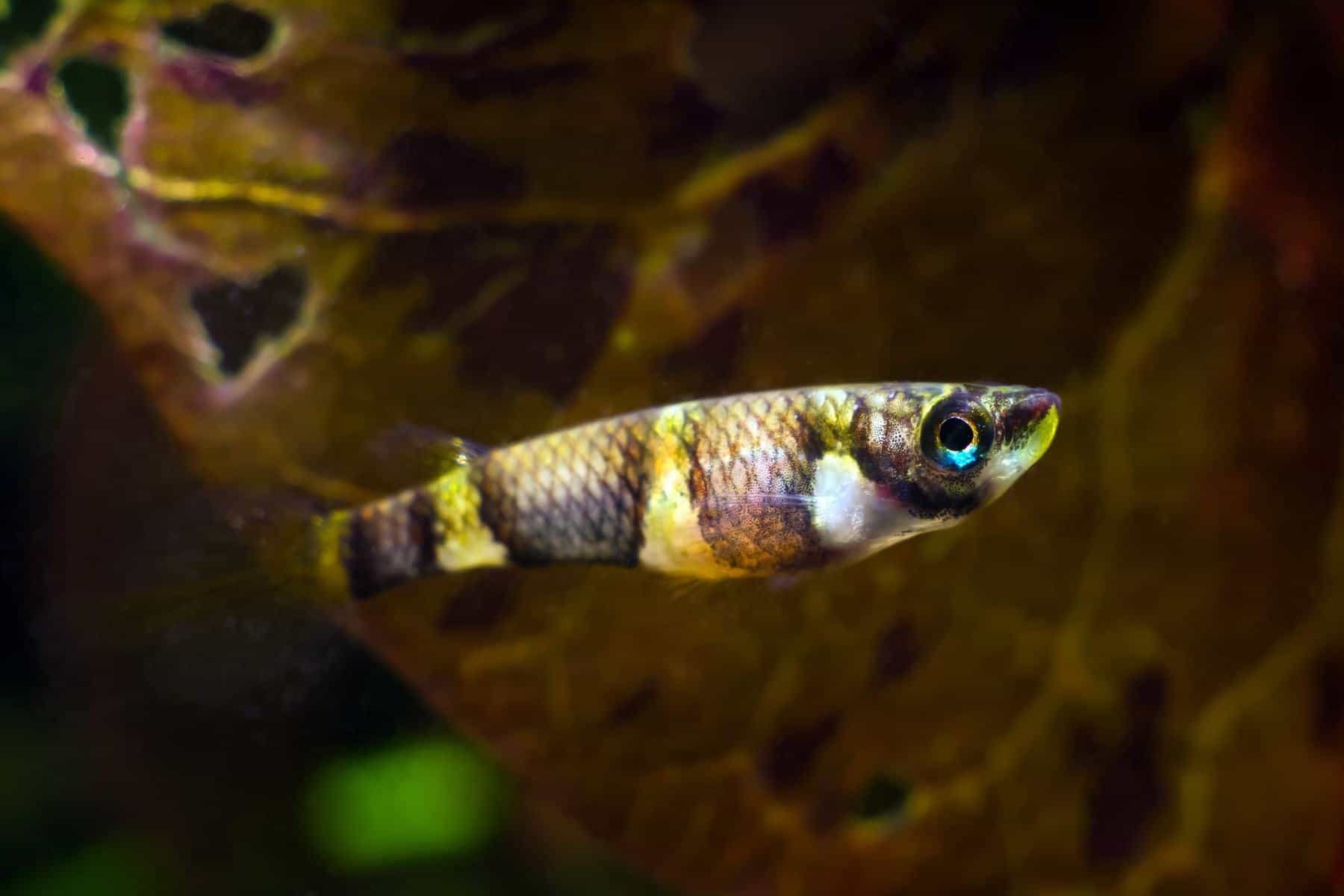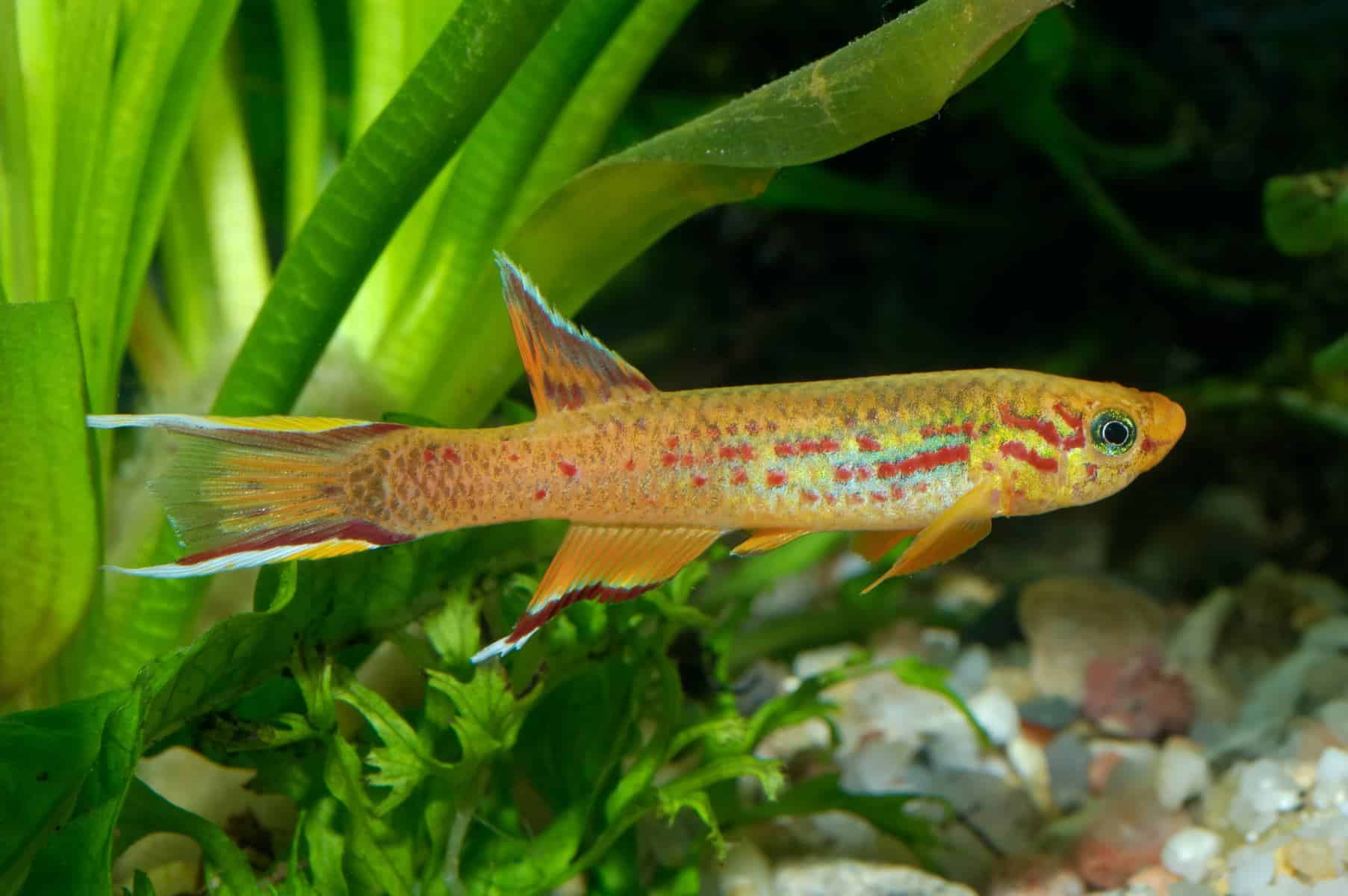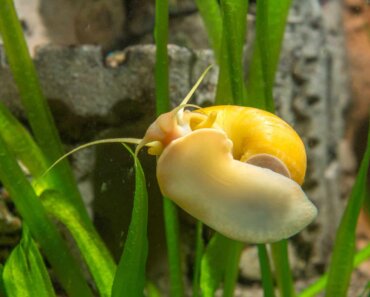You might have heard about killifish at some time throughout your life, but you might not exactly know what they look like, where they come from, or that they are a favorite in the aquarium hobby! Though harder to find than most other species, killifish make a great species-only ecosystem for smaller tanks.
Keep reading to find out everything you need to know about killifish and keeping these small colorful fish in your own aquarium!
About killifish
With over 1,000 discovered species, there are many different colors and variations of killifish. As a whole, these fish belong to the Cyprinodontiformes order and are further divided into groups based on reproductive strategy. In the aquarium, these fish are usually brightly colored and very hardy, thriving in a wide range of water parameters and tank conditions.
Annual killifish
You are likely to come across the term “annual fish.” Many species of killifish actually come from temporary pools of water that are filled during the rainy season and drained during the dry season. They have evolved in such a way to lay their eggs just before the dry season starts; the adult fish then die as the water evaporates, while killifish eggs have adapted to survive drought conditions. Once the rains fill up these temporary pools of water again, the eggs will hatch and a new generation of killifish will begin.
Sadly, because of this biological clock, their life span does not increase substantially in the aquarium either. Most annual killifish only live about 1-2 years even under perfect tank and water conditions. Luckily, these bottom spawners are pretty easy to breed using some peat moss and imitating the conditions of their natural habitat.
Sexual dimorphism
Many killifish exhibit sexual dimorphism, where the females and males are definitively different from each other in appearance. For killifish, females are usually slightly smaller and less colorful than males; males will also usually have more ornate fins that are usually referred to as being lyre-shaped. In general, it is best to keep one male for every three females.
Diet and behavior
Killifish are carnivores and some species can become aggressive towards each other and towards other fish in the tank. Many killifish do best in an aquarium that replicates their natural habitat, with lots of plants and driftwood. They will need to regularly be fed a variety of live foods, like brine shrimp and mosquito larvae; fry may also be fed live foods and are known to particularly favor brine shrimp.
One last thing to know about killifish is that they are extremely good jumpers! It is always a good idea to have a secure lid on your aquarium with these kinds of fish, as they can even sometimes find their way out of the smallest holes. Just make sure that gas exchange isn’t being impacted, though.
The best killifish species for the aquarium
Here are some of our top species of killifish that might make a perfect addition to your freshwater aquarium! It should be noted that some of these fish are quite expensive individually and should only be kept if past the beginner hobbyist level.
Golden panchax (Aphyosemion australe)

Also known as the lyretail panchax or Cape Lopez lyretail, the golden panchax is one of the most beautiful species of killifish available today; though they share similar common names, the golden panchax (Aphyosemion australe) should not be confused with the golden wonder killifish (Aplocheilus lineatus) described later.
This species of fish is endemic to the western coast of Africa, specifically Cape Lopez in Gabon. There, they can usually be found in areas with calm water currents, like in swamps and slow-moving rivers. Though these fish are admired for their color, the wild variation of the golden panchax was originally plain brown; the more vibrant orange colors known today are the result of a mutation.
Golden panchax can grow to about 2.5 inches (6.5 cm) and are quite shy in a community setting. It is best to keep them in a heavily planted aquarium with lots of places to hide and to help dim the lighting; a dark substrate will also help dim the lighting and show off the orange color of your fish.
There is some debate about what size tank golden panchax do best in. In general, pairs or trios can be kept in 10 gallon (37.9 L) aquariums with 20+ (75.7+ L) gallons allowing for more golden panchax and other community species.
Clown killifish/banded panchax (Epiplatys annulatus)

Clown killifish are one of the most popular killifish species in the aquarium hobby due to their fun colors, small size, and relatively easy maintenance. This species comes from a wide range, spanning from Guinea and Sierra Leone to Liberia, but are very uncommon to actually see in the wild. They are usually found in the surface waters of slow-moving and densely-vegetated streams and rivers across the savannah and rainforests.
Clown killifish only grow to be about 1.5 inches (3.8 cm) long when fully mature and have an alternating black-and-yellow pattern with signature red and blue caudal fin. These fish prefer more acidic conditions and will do best with a pH between 5.0 and 7.5 and a stable water temperature between 72-77° F (22.2-25.0° C). While small, it is recommended to keep a pair in at least 5 gallons (18.9 L) with 10 gallons (37.9 L) being even better; it is also recommended to have a longer tank than a taller tank as these fish tend to only stay in the top few inches of water.
Otherwise, they will appreciate a natural aquarium setup with lots of live plants, sand substrate, pieces of driftwood, and dim lighting; tannins, like those from Indian almond leaves, may help keep pH more acidic and help create dimmed conditions. The water current should be minimal as to not push the fish around the tank and to replicate their natural stagnant environments.
Most wild-caught specimens are labeled with their area of collection to avoid hybridization and to help keep populations separate.
Golden wonder killifish/Striped panchax (Aplocheilus lineatus)
The golden wonder killifish is a more intense color variation of the wild striped panchax. Striped panchax is endemic to India and Sri Lanka, though some natural populations have become threatened due to competition from introduced species, like mosquito fish (Gambusia sp. and Poecilia sp.). These fish can live in both freshwater and brackish water conditions and are often found eating insects from the surface waters of streams, rivers, and swamps.
Like other killifish, this species stays small and reaches a maximum size of about 4 inches (10 cm) with 2.5 inches (6.4 cm) being more common. They are selectively bred in the aquarium trade in order to achieve the brightest yellow colorations possible.
These fish do best in tropical water conditions with a stable water temperature between 72-77° F (22.2-25.0° C) and neutral pH around 7.0. They are generally a pretty hardy species but will need at least 20 gallons (75.7 L) as they can become semi-aggressive towards each other and other fish. Some hobbyists have even reported seeing their golden wonder killifish eat smaller fish, like neon teras and guppies; because of this, it’s usually recommended to set up a species-only tank or to only keep considerably larger fish as tank mates.
Redtail notho (Nothobranchius guentheri)
The redtail notho, also known as the Guentheri killifish, is another beautiful species of killifish that is starting to gain more popularity in the aquarium hobby; however, they’re a little more difficult to keep than many killifish species.
These fish live in the rainy pools on the island of Zanzibar, just off the coast of Tanzania, Africa. Unlike the previous species, the redtail notho is an annual fish, which means that they only survive for the rainy season. Just before the dry season begins, they will lay eggs that are able to withstand drought conditions. Once the rains return, a new population will start the cycle over. In the aquarium, these fish are believed to live about 1-2 years on average. However, if you take the time to breed them and recreate the seasonal changes that happen in their natural habitat, then you will have an ongoing ancestry!
Redtail notho killifish are named after their bright red caudal fins. They grow to be just over 2 inches (5.1 cm) long and look beautiful against a backdrop of dense vegetation. They do best in tropical water temperatures, between 72-77° F (22.2-25.0° C), and a neutral pH of about 7.0. Though small, these fish will also need to be kept in a larger tank if they are to be placed in a community setting. In order to keep other compatible species with them, at least a 20 gallon (75.7 L) aquarium is recommended.
If you’re trying to breed these egg-laying fish, you will need to recreate the rainy and dry seasons. Most hobbyists like to create a breeding tank with a 2-3 inch (5.1-7.6 cm) layer of peat moss. Once your killifish have spawned, remove this layer of peat moss from the tank and gently squeeze out excess water. This peat moss can then be placed in a closed environment at room temperature for the next 3-4 months. After that period, add the peat moss and tank water to a separate tank without the adult killifish; the eggs will spawn as the rainy season is replicated. Feed small foods, like brine shrimp and mosquito larvae, until the fish are ready to be placed in the main display.
Bluefin notho (Nothobranchius rachovii)
The bluefin notho is very similar to the redtail notho and is an annual fish as well, meaning that eggs are laid in preparation for the dry season and the killifish population recycles itself; like the redtail notho, the bluefin can also be challenging to keep in the aquarium setting. They are named after their spectacular blue fins and body.
The bluefin notho is native to Mozambique, more specifically in the temporary pools and floodplains near the Pungwe and Zambezi Rivers. These fish grow to just over 2 inches (5.1 cm) in length and do best in a freshwater community setting larger than 20 gallons (75.7 L).
The bluefin notho does best when kept in slightly cooler water temperatures, between 68-75° F (20.0-23.9° C), and a neutral pH of 7.0. However, they should always be kept in a heated aquarium to ensure that water conditions remain stable.
FAQ’s
Here are some commonly asked questions about killifish, and some questions you should ask yourself before going out and buying your fish!
Are killifish aggressive?
Some species of killifish are aggressive. While many have successfully been kept in community fish tank settings, those, like the golden wonder killifish/striped panchax (Aplocheilus lineatus), can become tempermental and pose a threat to other livestock in the aquarium. It is best to thoroughly research the type of killifish you plan on getting and planning the tank set up around them, especially since some killifish can be rather expensive.
Are killifish schooling fish?
Though it might seem like killifish should be a schooling species, they do not school. More often, killifish form pairs, though the males may occasionally become aggressive towards females depending on species and spawning periods. This can be avoided by having an appropriately-sized tank, more hiding places, and adding additional killifish.
What size tank do killifish need?
While killifish are small, they can be quite active and some species can even be aggressive. In general, it is best to go with a larger tank for most species–much larger than you might think you need for a fish that is only a couple of inches (5.1 cm) long.
For most species of killifish, a 20 gallon (75.7 L) tank would be the best size to start with.
Conclusion

Killifish are underrated fish that can bring a ton of life and color to your aquarium. They don’t need to much extra care and thrive in most tanks. Unfortunately, some killifish species don’t live for a long time; luckily, they are easy and fun to breed! Just make sure to research the type of killifish you plan on buying as each species has slightly different needs.
If you have any questions about killifish or have kept killifish in your own aquarium, don’t hesitate to leave a comment below!


























